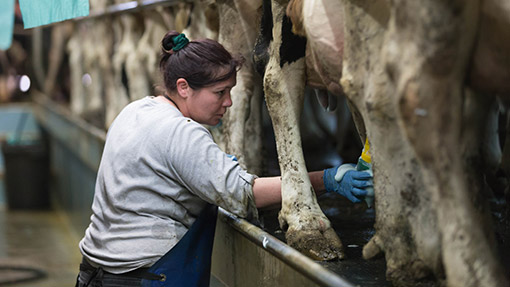9 mastitis facts to help you control this costly problem

Ensuring all teats are covered by disinfectant at every milking is one of several measures critical to the successful control of mastitis, according to one US expert.
Mastitis is a huge drain on the global dairy industry and in the UK, the average cost is estimated at about £200-300 a case.
See also: Farm technology funding to target mastitis in sheep
Pamela Ruegg from the University of Wisconsin believes successful control can only be achieved through the cumulative effect of consistently implementing a number of management practices.
Speaking exclusively to Farmers Weekly while on a Genus-orgainsed trip to the UK, she outlines her nine top mastitis facts to help farmers successfully get on top of the disease.
1 One to two minutes is the target lag time between initial teat stimulation and cluster attachment when milking.
2 Less than five minutes is the target total unit attachment time at milking.
3 Pre-dipping teats with a disinfectant can reduce bacterial loading on the teats five-fold.
4 Stripping before milking is crucial because half of clinical mastitis cases only present with abnormal milk.
5 Aim to cover every teat of every cow at every milking with teat disinfectant. The minimum is three-quarters of every teat being covered by disinfectant.
6 Research has shown no difference in mastitis rates between stripping and then dipping teats or dipping and then stripping.
7 Farms that regularly train staff in all aspects of mastitis control have a lower rate of clinical mastitis and faster milking speeds.
8 US farms that train staff frequently average six cases of mastitis for every 100 cows a month compared with nearly 10 cases on farms that never train. (Research by Wisconsin University)
9 US farms that don’t have a complete milking routing average 10 cases of mastitis for every 100 cows monthly – twice that of farms with a routine. (Research by Wisconsin University)
